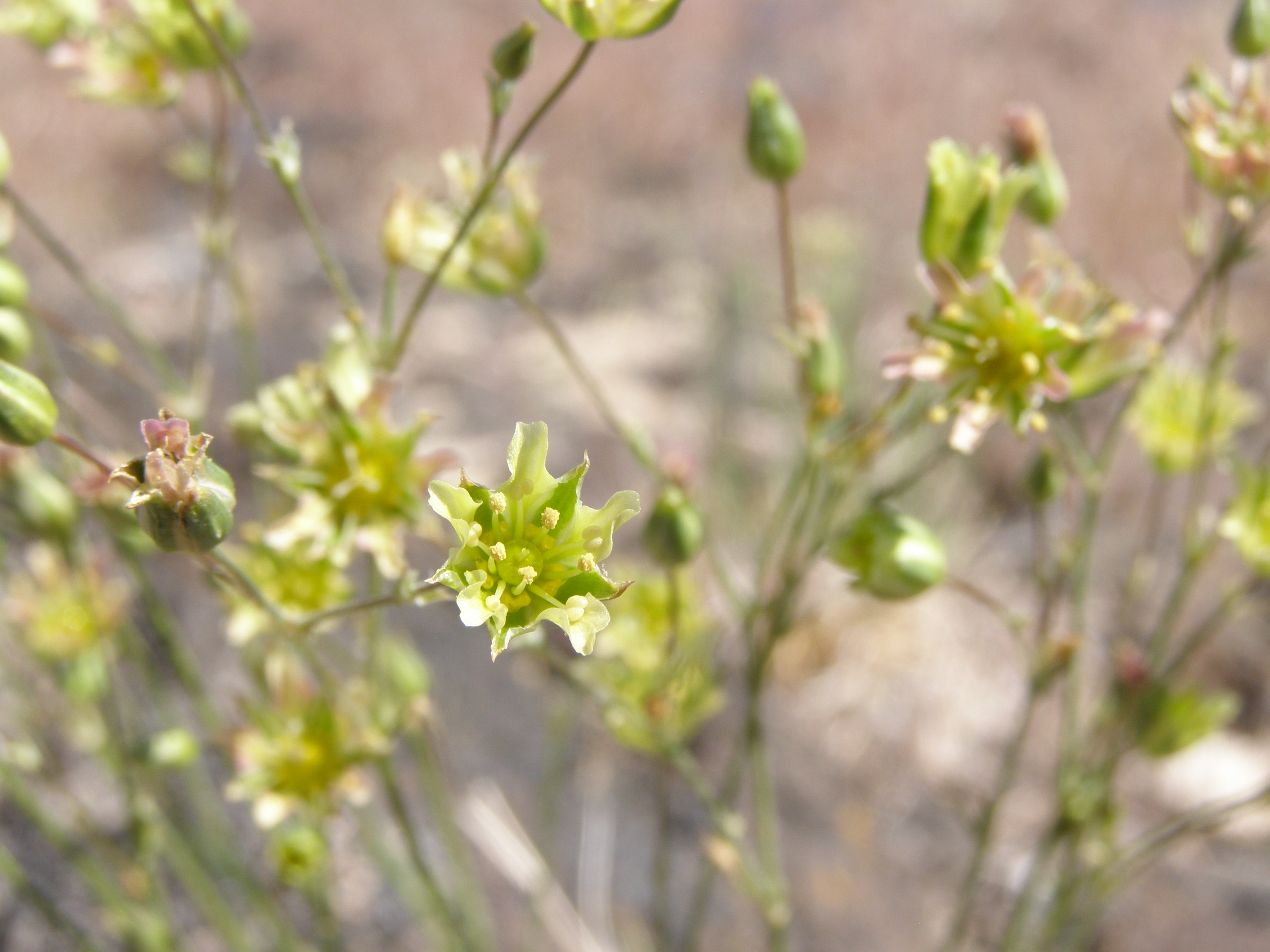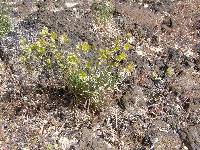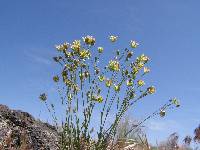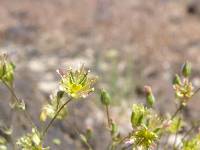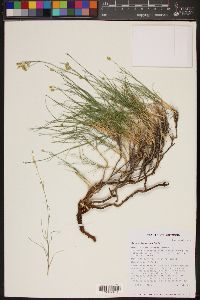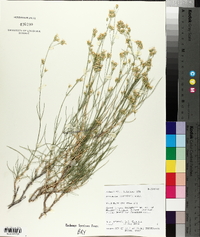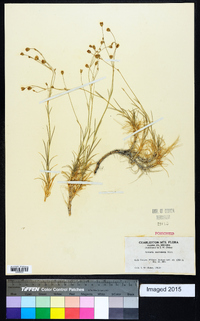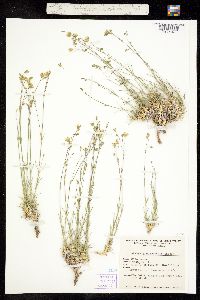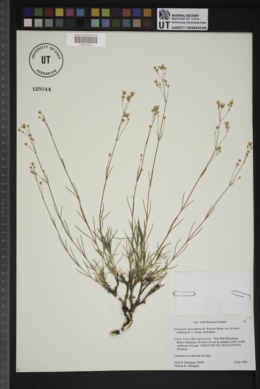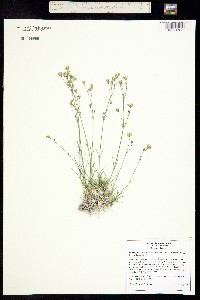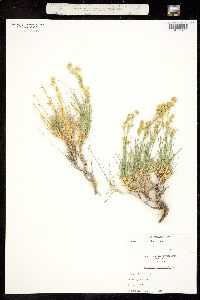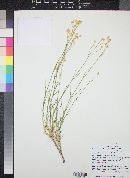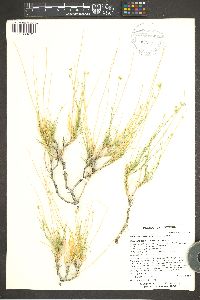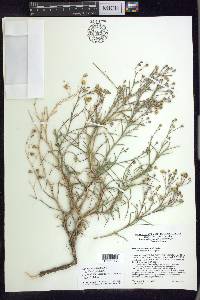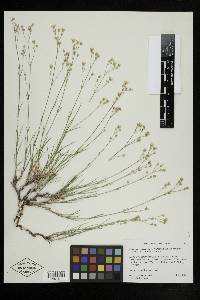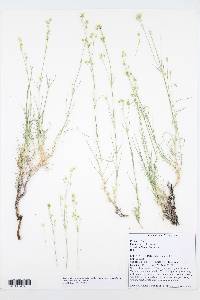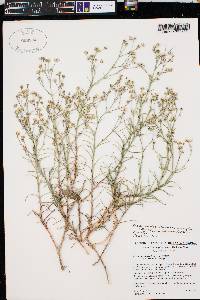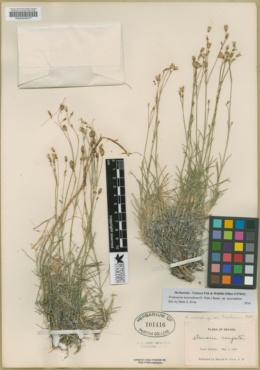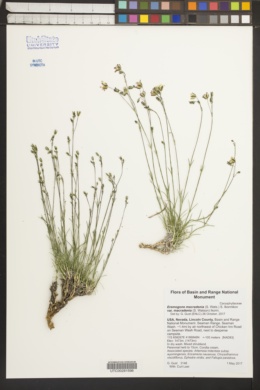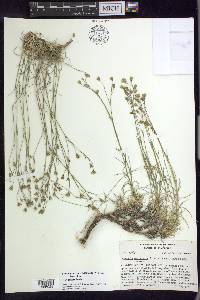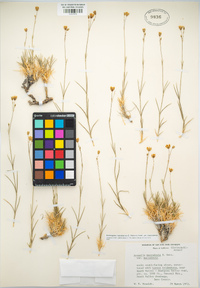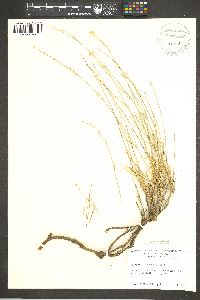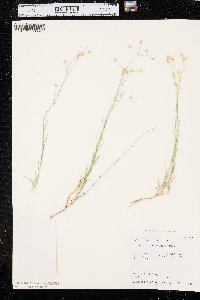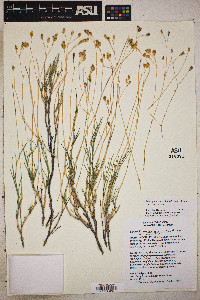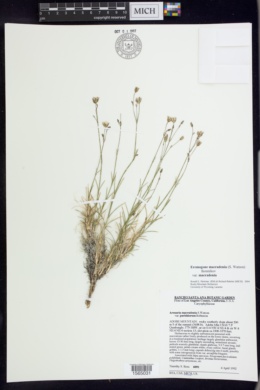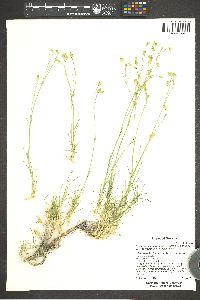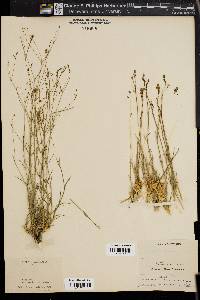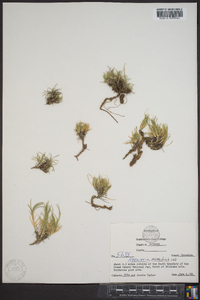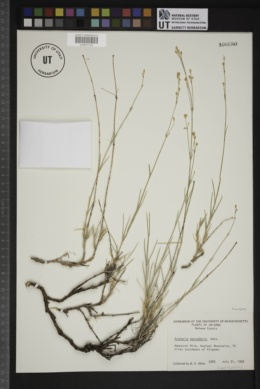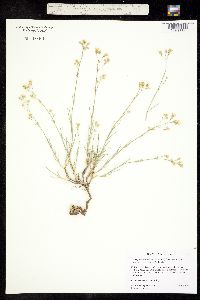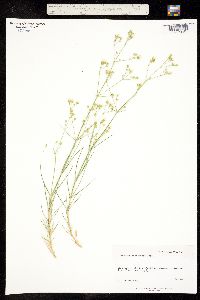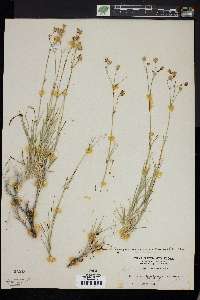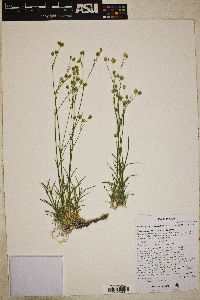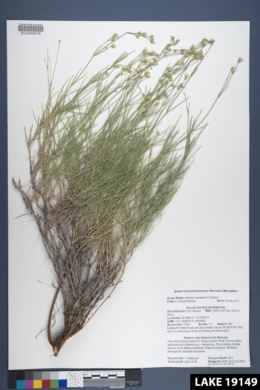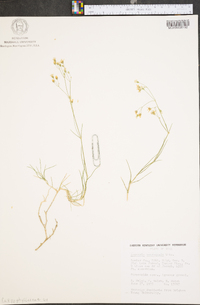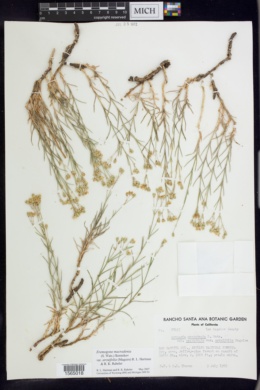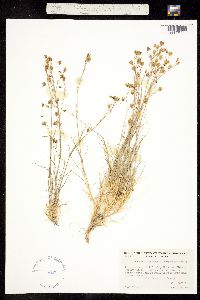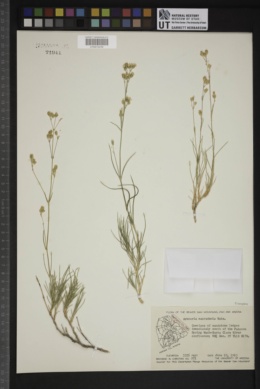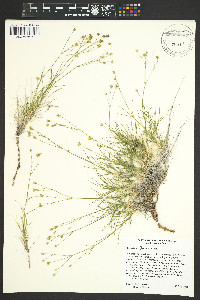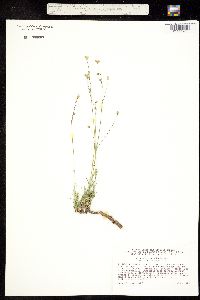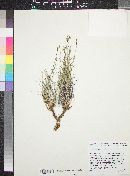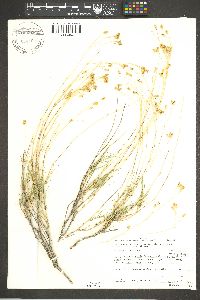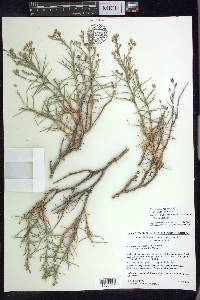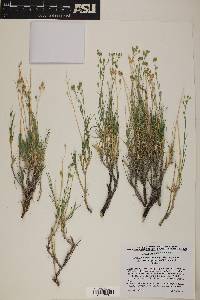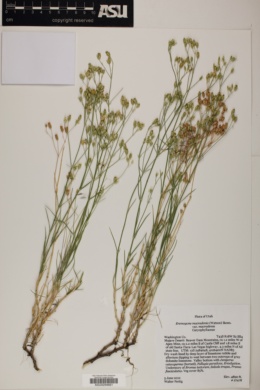Eremogone macradenia
|
|
|
|
Family: Caryophyllaceae
Mojave Matted Sandwort, more...Mojave sandwort, Mojave sandwort, shrubby sandwort
[Arenaria macradenia S. Wats., moreArenaria macradenia var. macradenia Maguire] |
Plants tufted, green, not glaucous, with woody base. Stems erect, (10-)20-40(-70) cm, glabrous to stipitate-glandular. Leaves: basal leaves sparse or absent; cauline leaves usually in 5-12+ pairs, not significantly reduced; basal blades ascending to arcuate-spreading or recurved, needlelike or narrowly linear, (0.7-)2-6(-7) cm × 0.8-2 mm, ± rigid, herbaceous to subsucculent, apex blunt to spinose, glabrous, not glaucous. Inflorescences 3-20(-30)-flowered, ± compact cymes; branches ascending to erect. Pedicels 3-45 mm, glabrous or stipitate-glandular. Flowers: sepals 1-3-veined, ovate to lanceolate or elliptic, 4.5-7.2 mm, to 8 mm in fruit, margins narrow to broad, apex acute to acuminate, glabrous to sparsely stipitate-glandular; petals white or yellowish, oblanceolate to spatulate, 6-11 mm, 1-2 times as long as sepals, apex entire or erose; nectaries thickened, molarlike, apically 2-lobed, 1-1.5 mm, or narrowly longitudinally rectangular, truncate, 0.7-0.8 mm, densely minutely pubescent with erect to spreading hairs. Capsules 6-8 mm, glabrous. Seeds greenish or reddish brown to blackish, suborbicular to pyriform or ovoid, 1.3-3.2 mm, tuberculate, sometimes echinate on abaxial ridge; tubercles low, rounded to conic. Eremogone macradenia is in the Center for Plant Conservation's National Collection of Endangered Plants.
Jepson 1993, Kearney and Peebles 1969, Wiggins 1964 Duration: Perennial Nativity: Native Lifeform: Subshrub General: Tufted perennial, green with rounded stem 20-40 cm, more or less dull, sometimes glandular hairy. Leaves: Needle-like, herbaceous, blunt to sharp-pointed with a single veing 20-60 mm, 0.5-2 mm wide. Flowers: Terminal cyme, flowers several to many, compact to open, pedicels 3-55 mm; sepals 3-7.2 mm, in fruit less than 8 mm, acute to acuminate; petals 6-11 mm; nectaries 2-lobed, 0.7-1.5 mm. Fruits: Longitudinally dehiscent capsule with 4-9 seeds, 1.8-2.7 mm, spheric to ovate, compressed, reddish brown to blackish. Ecology: Found in open woodlands, flats, dry rocky slopes from 3,500-8,500 ft (1067-2591 m); flowers April-May. Notes: This species has generally been collected in NW Arizona, excepting subsp. macradenia which was collected in 1936 in the Superstition Mountains. This is a species worthy of collection to add to the knowledge of the species- distribution. Ethnobotany: The root smoke was inhaled for headaches, so too was a poultice of the roots applied, as a salve for pain, as an antirheumatic, as a salve for pimples, and the smoke also cleared the sinuses. Etymology: Arenaria is from the Latin arena, sand, which refers to the sandy places the species lives, while macradenia means with large glands. Synonyms: Arenaria macradenia Editor: SBuckley, 2010 Plant: Perennial, tufted, green; stem 20-40 cm, rounded, ± dull, sometimes glandular-hairy Leaves: simple, opposite, 20-60 mm, 0.5-2 mm wide, needle-like, herbaceous, blunt to sharp-pointed; vein 1 INFLORESCENCE: cyme, terminal; flowers several-many, compact to open; pedicels 3-55 mm Flowers: hypanthium barely present; sepals 5, ± free, 3-7.2 mm, in fruit < 8 mm, acute to acuminate; petals 6-11 mm; nectaries 2-lobed, 0.7-1.5 mm; stamens inserted on obscure to prominent disk; ovary ± superior, styles 3, 0.5-2 mm Fruit: Fruit: capsule, ovoid to urn-shaped; teeth 6, ascending to recurved; Seeds 4-9, 1.8-2.7 mm, ± spheric to ovate, compressed, reddish brown to blackish; tubercles low, rounded to conic Misc: Open woodlands, sagebrush flats, dry rocky slopes; 1100-2500 m. |
|
|
|

